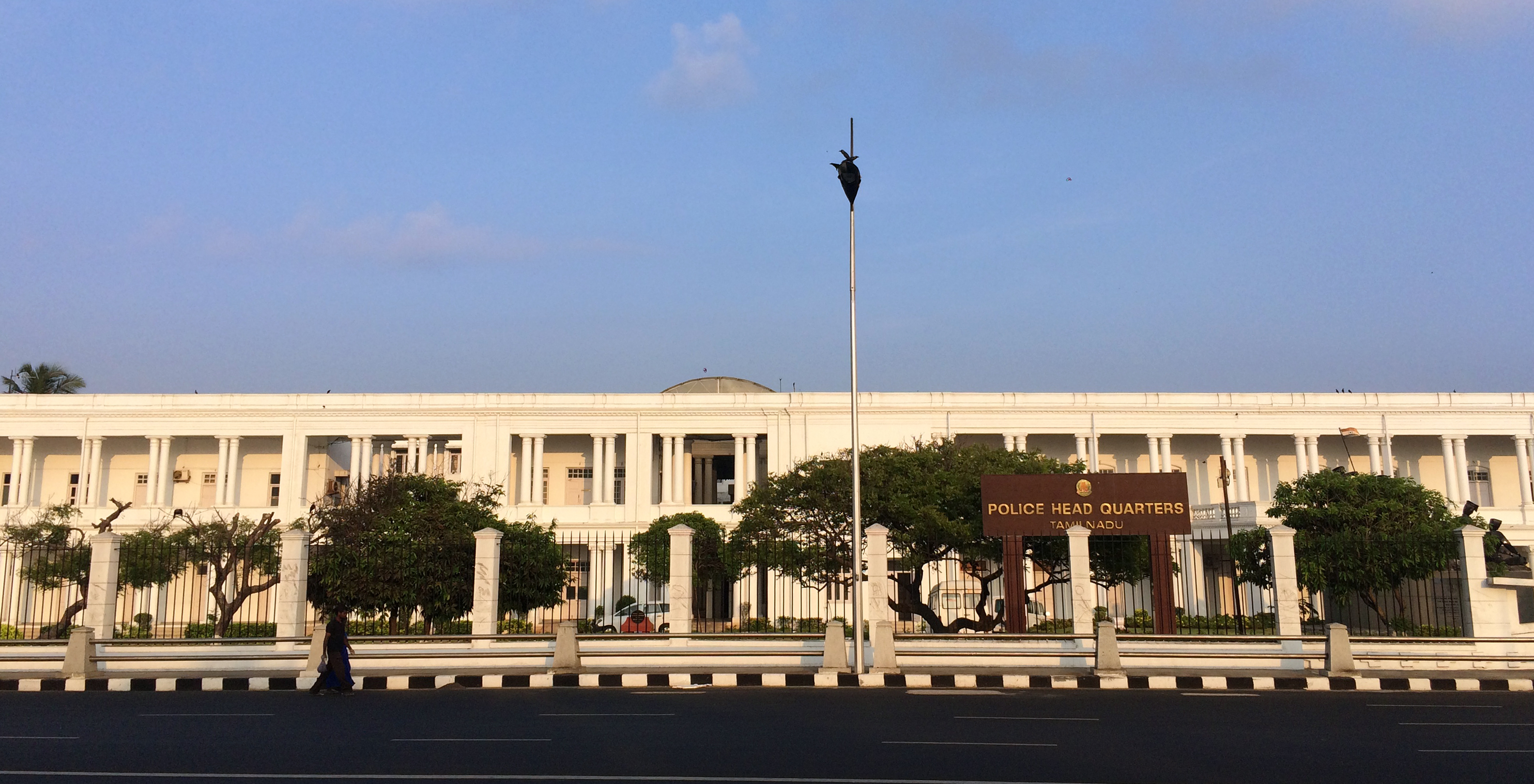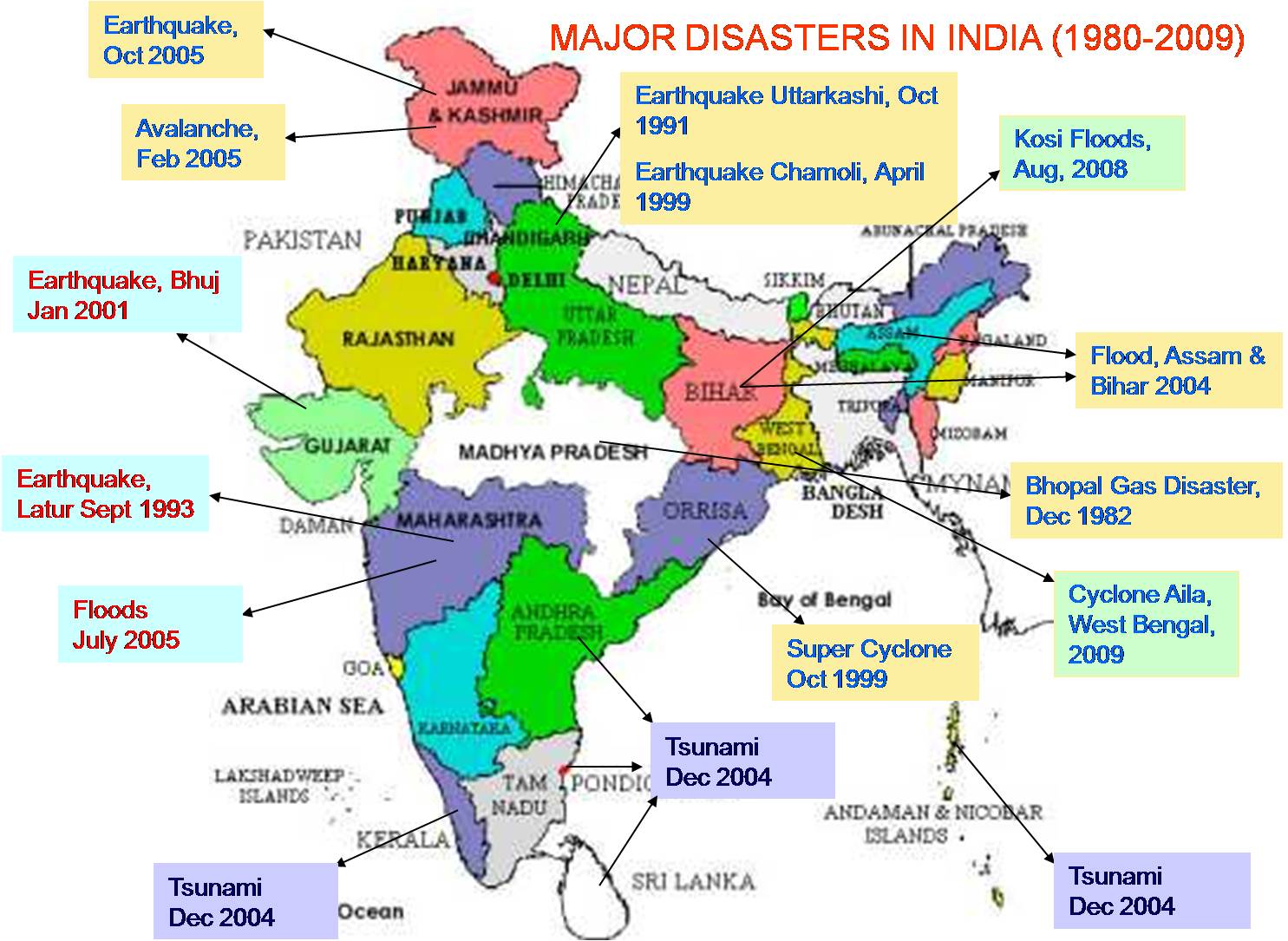|
Tamil Nadu Disaster Response Force
Tamil Nadu State Disaster Management Authority is a government agency in the Indian state of Tamil Nadu. Established in 2003, it is responsible for disaster management, planning and recovery. History On 8 July 2003, Government of Tamil Nadu issued an order (G.O.323) for the constitution of a state disaster management authority (SDMA) under the Department of Revenue. The department was to be headed by the Chief Secretary and would help in preparing, mitigation and response to disasters. In December 2005, Government of India enacted the Disaster Management Act, 2005 which mandated the creation of state disaster management agencies with the chief minister of the state as the chairperson. Accordingly, On 26 September 2008, Government of Tamil Nadu issued an order (G.O.564) to reconstitute the SDMA with the Chief Minister of Tamil Nadu as the chairperson for monitoring the disaster management activities in the state. Composition SDMA is constituted of a chairperson and ten members: ... [...More Info...] [...Related Items...] OR: [Wikipedia] [Google] [Baidu] |
Government Of Tamil Nadu
Government of Tamil Nadu is the subnational government for the Indian state of Tamil Nadu. It is seated at Fort St George, Chennai. The legislature of Tamil Nadu was bicameral until 1986, when it was replaced by a unicameral legislature, like most other states in India. Structure The Governor is the constitutional head of state while the Chief Minister heads the council of ministers. The Chief Justice of the Madras High Court is the ''head of the judiciary''. Officials M. K. Stalin is the Chief Minister of Tamil Nadu. Munishwar Nath Bhandari is the acting Chief Justice of Madras High Court. The Chief Secretary is V. Irai Anbu, IAS. Administrative divisions The state of Tamil Nadu has a population of 72,138,959 as per the 2011 Census and covers an area of 130,058 km2. The major administrative units of the state constitute 38 districts, 76 revenue divisions, 220 taluks, 21 municipal corporations, 150 municipalities, 385 panchayat unions (blocks), 561 town pa ... [...More Info...] [...Related Items...] OR: [Wikipedia] [Google] [Baidu] |
Anna University
Anna University is a public state university located in Tamil Nadu, India. The main campus is in Chennai. It was originally established on 4 September 1978 and was named after C. N. Annadurai, the former Chief Minister of Tamil Nadu. History & Structure Anna University (Chennai) comprises four colleges - The College of Engineering (CEG, Guindy Campus), The Alagappa College of Technology (ACT, Guindy Campus), The Madras Institute of Technology (MIT, Chromepet Campus) and The School of Architecture and Planning (SAP, Guindy Campus). The first version of Anna University formed in 1978 and various governments repeatedly kept changing the varsity's structure and affiliation scope. In 2001, under the Anna University Amendment Act of 2001, the erstwhile Anna University became an affiliating university, taking under its wings all the engineering colleges in Tamil Nadu. This included six government engineering colleges, three government-aided private institutions, and 426 self-f ... [...More Info...] [...Related Items...] OR: [Wikipedia] [Google] [Baidu] |
Emergency Management In India
An emergency is an urgent, unexpected, and usually dangerous situation that poses an immediate risk to health, life, property, or environment and requires immediate action. Most emergencies require urgent intervention to prevent a worsening of the situation, although in some situations, mitigation may not be possible and agencies may only be able to offer palliative care for the aftermath. While some emergencies are self-evident (such as a natural disaster that threatens many lives), many smaller incidents require that an observer (or affected party) decide whether it qualifies as an emergency. The precise definition of an emergency, the agencies involved and the procedures used, vary by jurisdiction, and this is usually set by the government, whose agencies ( emergency services) are responsible for emergency planning and management. Defining an emergency An incident, to be an emergency, conforms to one or more of the following, if it: * Poses an immediate threat to life, h ... [...More Info...] [...Related Items...] OR: [Wikipedia] [Google] [Baidu] |
Times Of India
''The Times of India'', also known by its abbreviation ''TOI'', is an Indian English-language daily newspaper and digital news media owned and managed by The Times Group. It is the third-largest newspaper in India by circulation and largest selling English-language daily in the world. It is the oldest English-language newspaper in India, and the second-oldest Indian newspaper still in circulation, with its first edition published in 1838. It is nicknamed as "The Old Lady of Bori Bunder", and is an Indian " newspaper of record". Near the beginning of the 20th century, Lord Curzon, the Viceroy of India, called ''TOI'' "the leading paper in Asia". In 1991, the BBC ranked ''TOI'' among the world's six best newspapers. It is owned and published by Bennett, Coleman & Co. Ltd. (B.C.C.L.), which is owned by the Sahu Jain family. In the Brand Trust Report India study 2019, ''TOI'' was rated as the most trusted English newspaper in India. Reuters rated ''TOI'' as India's most t ... [...More Info...] [...Related Items...] OR: [Wikipedia] [Google] [Baidu] |
Avadi
Avadi () is a suburb of Chennai within Chennai Metropolitan Area limit, located in the Thiruvallur district of Tamil Nadu, India. It is a municipal corporation west of Chennai, about from Chennai Central Railway Station. It is surrounded by major defence establishments and is home to various universities and engineering colleges. The city is served by Avadi Railway Station of the Chennai Suburban Railway. As of 2011, Avadi had a population of 345,996, which is 10th most populous place in Tamil Nadu. It is home to the Heavy Vehicles Factory (HVF), Ordnance Factory Board (ODF) which houses Engine Factory and Combat Vehicles Research and Development Establishment (CVRDE). The lake in Avadi was known as Paaleripattu, which is now found only in very old land documents. Etymology The exact origin of the name 'Avadi' is not known. One version has it that it is the combination of "Aa" (meaning cow) and "Adi or gudi (kudi)" (meaning place in Tamil), indicating that the place ha ... [...More Info...] [...Related Items...] OR: [Wikipedia] [Google] [Baidu] |
Tamil Nadu Police
Tamil Nadu Police is the primary law enforcement agency of the state of Tamil Nadu, India. It is over 150 years old and is the fifth largest state police force in India.Tamil Nadu Police Tamil Nadu has a police-population ratio of 1:632. The Director General of the Tamil Nadu police is C. Sylendra Babu. Organization For administrative purposes, the state has been divided into four police zones – North, South, West and Central each headed by an . |
National Disaster Response Force
The National Disaster Response Force (NDRF) is an Indian specialized force constituted "for the purpose of special response to a threatening disaster situation or disaster" under the Disaster Management Act, 2005. The "Apex Body for Disaster Management" in India is the National Disaster Management Authority (NDMA). The Chairman of the NDMA is the Prime Minister. The responsibility of managing disasters in India is that of the State Government. The ‘Nodal Ministry’ in the central government for management of natural disasters is the Ministry of Home Affairs (MHA). When 'calamities of severe nature' occur, the Central Government is responsible for providing aid and assistance to the affected state, including deploying, at the State's request, of Armed Forces, Central Paramilitary Forces, National Disaster Response Force (NDRF), and such communication, air and other assets, as are available and needed. National Disaster Response Force (NDRF) is under the National Disaster ... [...More Info...] [...Related Items...] OR: [Wikipedia] [Google] [Baidu] |
Indian Institute Of Technology, Madras
Indian Institute of Technology Madras (IIT Madras) is a public technical university located in Chennai, Tamil Nadu, India. As one of the Indian Institutes of Technology (IITs), it is recognized as an Institute of National Importance and has been consistently rated as one of India's most prestigious universities. Founded in 1959 with technical and financial assistance from the former government of West Germany, it was the third IIT established by the Government of India. IIT Madras is ranked the top engineering institute in India by the Ministry of Education's National Institutional Ranking Framework since its inception in 2016. IIT Madras is a residential institute that occupies a campus that was formerly part of the adjoining Guindy National Park. The institute has nearly 600 faculty, 10,000 students and 1,250 administrative and supporting staff. [...More Info...] [...Related Items...] OR: [Wikipedia] [Google] [Baidu] |
Disaster Management Act, 2005
The Disaster Management Act, 2005, (23 December 2005) No. 53 of 2005, was passed by the Rajya Sabha, the upper house of the Parliament of India on 28 November, and the Lok Sabha, the lower house of the Parliament, on 12 December 2005. It received the assent of The President of India on 23 December 2005. The Disaster Management Act, 2005 has 11 chapters and 79 sections. The Act extends to the whole of India. The Act provides effective management of disasters and for matters connected there with or incidental thereto." The main focus of this act is to provide the people who are affected with disasters, their life back and helping them. National Authority The Act calls for the establishment of National Disaster Management Authority ( NDMA), with the Prime Minister of India as chairperson. The NDMA may have no more than nine members including a Vice-Chairperson. The tenure of the members of the NDMA shall be five years. The NDMA which was initially established on ... [...More Info...] [...Related Items...] OR: [Wikipedia] [Google] [Baidu] |
Chennai
Chennai (, ), formerly known as Madras ( the official name until 1996), is the capital city of Tamil Nadu, the southernmost Indian state. The largest city of the state in area and population, Chennai is located on the Coromandel Coast of the Bay of Bengal. According to the 2011 Indian census, Chennai is the sixth-most populous city in the country and forms the fourth-most populous urban agglomeration. The Greater Chennai Corporation is the civic body responsible for the city; it is the oldest city corporation of India, established in 1688—the second oldest in the world after London. The city of Chennai is coterminous with Chennai district, which together with the adjoining suburbs constitutes the Chennai Metropolitan Area, the 36th-largest urban area in the world by population and one of the largest metropolitan economies of India. The traditional and de facto gateway of South India, Chennai is among the most-visited Indian cities by foreign tourists. It was rank ... [...More Info...] [...Related Items...] OR: [Wikipedia] [Google] [Baidu] |
Government Of India
The Government of India ( ISO: ; often abbreviated as GoI), known as the Union Government or Central Government but often simply as the Centre, is the national government of the Republic of India, a federal democracy located in South Asia, consisting of 28 union states and eight union territories. Under the Constitution, there are three primary branches of government: the legislative, the executive and the judiciary, whose powers are vested in a bicameral Parliament, President, aided by the Council of Ministers, and the Supreme Court respectively. Through judicial evolution, the Parliament has lost its sovereignty as its amendments to the Constitution are subject to judicial intervention. Judicial appointments in India are unique in that the executive or legislature have negligible say. Etymology and history The Government of India Act 1833, passed by the British parliament, is the first such act of law with the epithet "Government of India". Basic structure The ... [...More Info...] [...Related Items...] OR: [Wikipedia] [Google] [Baidu] |
Chief Secretary (India)
The Chief Secretary is the top-most executive official and senior-most civil servant of the state government. The Chief Secretary is the '' ex-officio'' head of the state Civil Services Board, the State Secretariat, the state cadre Indian Administrative Service and all civil services under the rules of business of the state government. The Chief Secretary acts as the principal advisor to the chief minister on all matters of state administration. The Chief Secretary is an officer of the Indian Administrative Service. The Chief Secretary is the senior-most cadre post in the state administration, ranking 23rd on the Indian order of precedence. The Chief Secretary acts as an '' ex-officio'' secretary to the state cabinet, therefore called ''"Secretary to the Cabinet"''. The status of this post is equal to that of a Secretary to the Government of India. History The salary of Chief Secretary of United Provinces of Agra and Oudh, Punjab and Burma was fixed and was same to Joint S ... [...More Info...] [...Related Items...] OR: [Wikipedia] [Google] [Baidu] |








